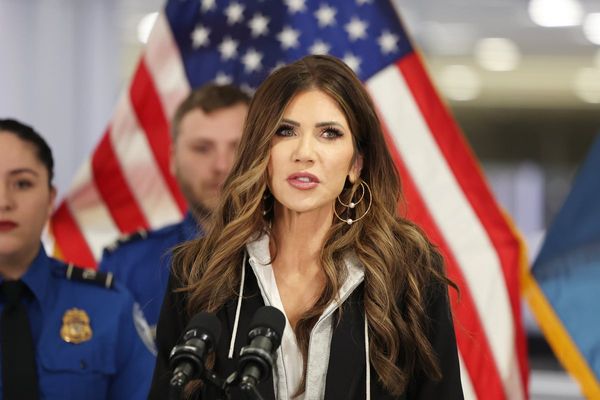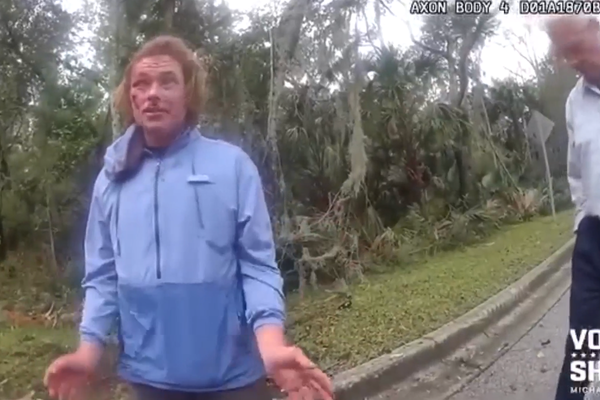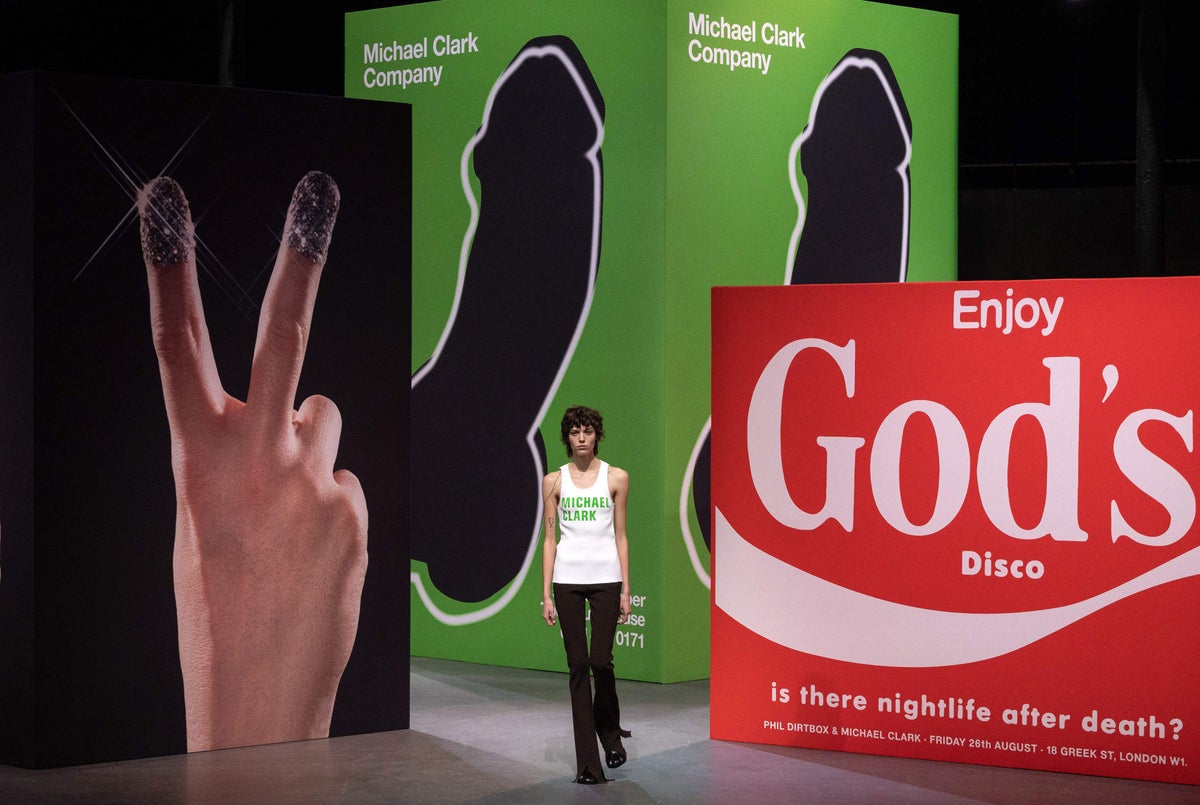
It’s at this point during London Fashion Week that things start to fall by the wayside. Platform heels are replaced by sturdy flats, uncomfortable short skirts traded with looser tailored trousers. Makeup has gone out the window, too, because a fashion show is one of the few environments in which wearing sunglasses inside is not only acceptable but expected. I’ve also stopped straightening my hair. This was day three of LFW and I was tired.
If the previous two days had been subdued and a little austere, mercifully Sunday’s line-up really ratcheted up the silliness quotient. It was fun, colourful, playful. That it featured some of the biggest names in British fashion – including JW Anderson and Christopher Kane – meant there were starry front row guests and showstopping venues aplenty. There had also been whisperings of a few famous faces on the runway itself, with Emily Ratajkowski having walked for JW Anderson last season.
On that note, here’s what Joseph and I saw on day three.
JW Anderson
Roundhouse, NW1
The first thing I noticed was the bob. There is no haircut more famous in fashion than that belonging to Anna Wintour, the illustrious editor of American Vogue and global chief content officer for Conde Nast. And there it was: right in front of a giant penis in the Roundhouse. For context, the penis was on a large green board that had been, erm, erected in the centre of JW Anderson’s catwalk in homage of choreography legend Michael Clark, to whom the show was dedicated. There was also a scarlet billboard modelled on one for Coca Cola that bore the words, “enjoy God’s disco” and “is there nightlife after death?”
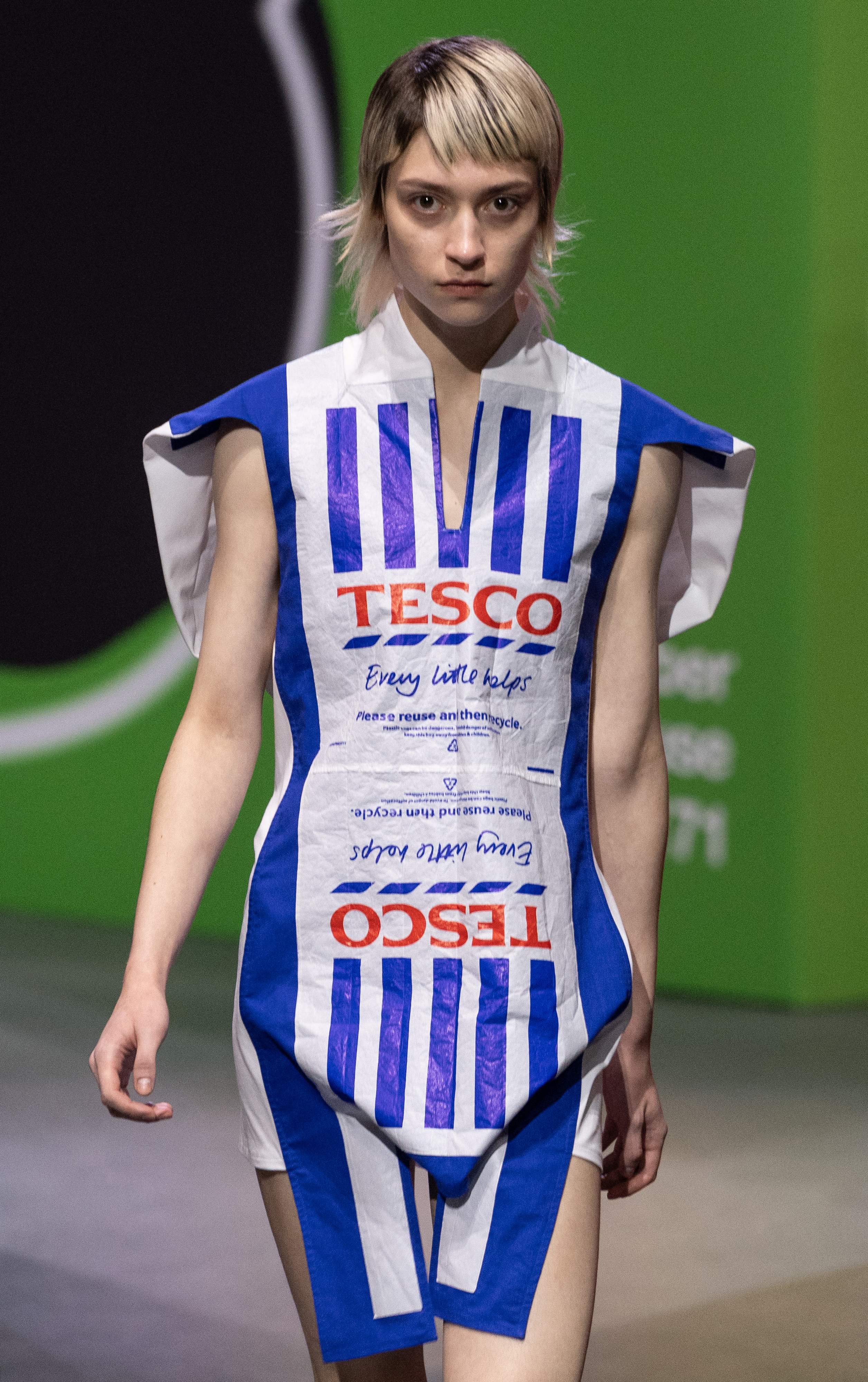
“At its core, this is a collection about fandom,” Anderson explained in the show notes. This made sense, given how many people there were worth fangirling over in his front row, ranging from Naomi Campbell and Arlo Parks to Bel Powley and Ncuti Gatwa. The result was a buzzing energy I haven’t felt at a London show in quite some time. This was matched by the collection itself, which featured an eclectic mix of logomania T-shirts, neon flares, feather boas, and slogan jumpers (“witch?” asked one). One look you’ll inevitably see all over Instagram was the Tesco shopping bag dress, which looked exactly as it sounds. The penis also found its way onto a T-shirt made from stiff vinyl fabric, as did the Coca Cola-motif. A typically subversive line from one of industry’s most revered renegades. OP
Feben
The Old Selfridges Hotel, W1H
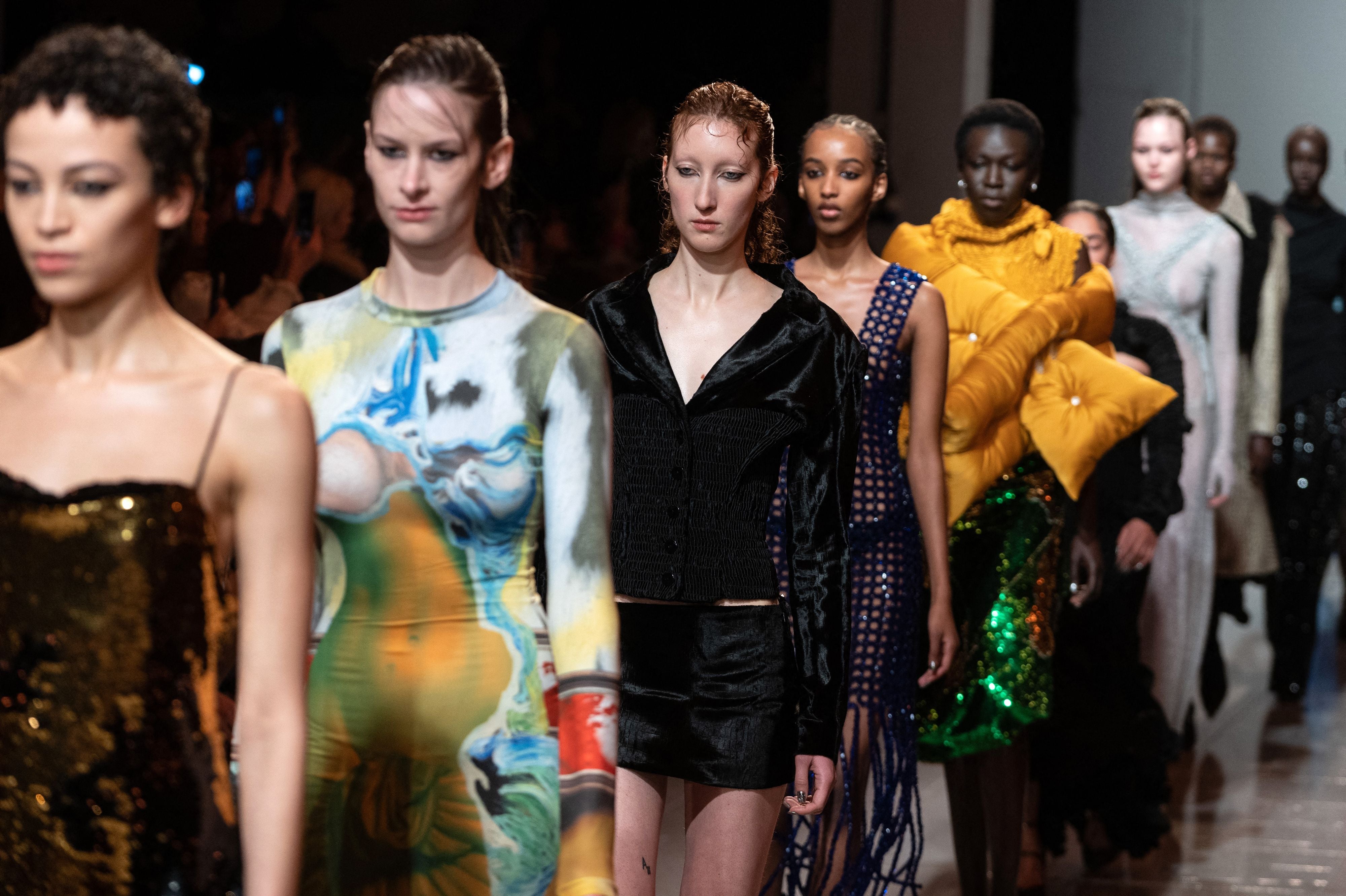
Stories like Feben Vemmenby’s are one in a million. Born in North Korea and raised in Sweden, the Ethiopian designer spent a large portion of her youth between refugee camps. Fast-forward to now, and Feben, who goes by her first name only, holds darling status on the London Fashion Week schedule, promising a fine rendition of Black craft every season.
For AW23, it was business as usual. Models stormed the runway in swathes of black eveningwear primed with her signature “bobbling” effect – a technique honed using laser-cutting technology. Alongside this, a bevy of painterly slip and bodycon dresses punctuated the offering. On Sunday, even the stiffest-lipped editors were swooning over Feben’s details. Blazers were enhanced with meticulous corsetry, undulating with crimped silk, while frilled dresses composed entirely of jewelled beads clinked as they swung past the frow. The latter, made by local Ghanaian artisans, are becoming another code. “It’s an ongoing collaboration to secure sustainability in the workforce,” said Feben backstage.
Of course, the city is alight with emerging talents, but Feben’s vision feels unique. It’s only a matter of time before she lands an LVMH prize, cements her name globally, and then – if she’s up for it – helms a house. Whether that’s in her 10-year plan remains to be seen, but judging by the clothes, it’s a real possibility. If the paillette gowns brushed to look like world maps, button-tufted scarfs or double-breasted jackets that seemed to morph from crushed velvet to crocodile print told us anything, it’s that Feben is going places. JB
Christopher Kane
The Block, N1
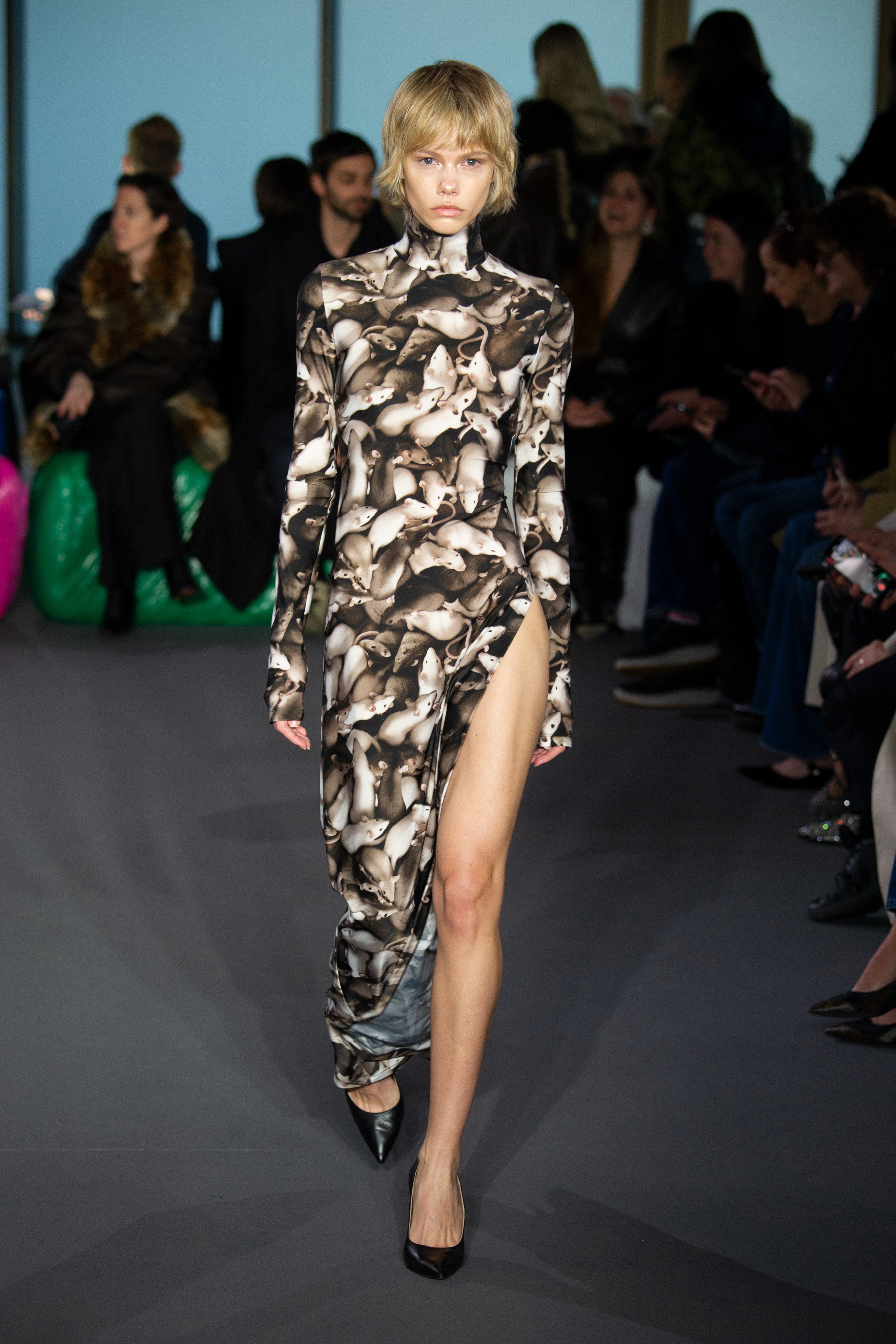
Back to one of my biggest LFW bug bears: uncomfortable seating. This time around, the fashion pack were huddled onto haybales wrapped in brightly coloured bin bags. Mine was blue. Guests including Alexa Chung, Clara Amfo, Poppy Delevingne, and once again, Anna Wintour, squeezed onto the squeaky seats to witness Kane’s 1980s-inspired collection, which featured a cast of characters based on family members and neighbours in growing up in the decade. There were sequin-soaked frocks in burgundy and emerald, and strange chopping-board collars that added an unusual silhouette to otherwise somewhat formal frocks. Bustles were recurrent throughout, particularly on the backs of tight-fitting, long-sleeved mini dresses that came in charcoal and lace.
An unexpected element came by way of AI-generated animal print dresses with thigh-high slits. There were chicks, rats, pigs, and butterflies covering fitted frocks and tops – Kane explained that they are “for those who desire clothes that challenge sartorial tastes and standards”. The undisputed highlight, though, was a bright scarlet peplum dress made from a soft-looking rubber. All in all, some much-needed silliness for the inevitably flagging fashion pack. OP
Yuhan Whang
The Old Selfridges Hotel, W1H
There’s fashionably late, and then there’s annoyingly late. Wang’s show sat right in the middle, a dangerous move when you’re showing on day three to throngs of fractious fashion egos souped up on cheap coffee and Diet Coke, the British Fashion Council’s official sponsor. Fortunately, Wang came good, serving up a bizarre dichotomy of braggadocio and saccharine femininity in knotted lace, pallid pinks and rugged leather jackets printed with chains. Unsurprisingly, the subplot of gender and how this translates in western and eastern dress was present, but this time, something felt off.
I pondered for a moment, when a bouffoned model rocking open-front kitten heels laced to the nth degree came past. Camp! That’s it. That’s what the cow print fluff, woollen lingerie, samurai swords and tufted cowboy coats were all about. That, or this was a masterclass in problematic costume. Luckily, the designer’s long-held fascination with varied displays of emotion across continents – born from her experiences studying as a Chinese woman in the UK and US – give her carte blanche.
Subtlety, usually one of her show’s perennial features, had all but vanished, leaving only hints of her former work in the patchworked chintz and rosette woollens. But a dig this is not. For all the academics in the world, sometimes it takes someone who who has lived the East-West, communist-capitalist diaspora to render its rich and kitsch allure. Maybe that’s what the show’s title, “The Women Who Came Back”, had referenced. After all, she has always said clothes are the medium to explore identity. JB
Labrum
Brixton Village, SW9
Labrum’s creative director Foday Dumbuya is one of a growing cohort in the fashion industry that use textile and tailoring to tell otherwise unheard stories of diasporic identity. Small wonder, then, that the Sierra Leone-born designer chose Brixton Village for his show location, a site of longstanding contention between second-generation migrants and its opponents – be this the explicit racism that gripped the south London through Eighties and Nineties Britain or today’s brighter, glossier adversary, gentrification.
Riffing on Samuel Selvon’s 1965 novel The Lonely Londoners, the show began with a poetry reading, touching on themes of arrival, alienation and honouring one’s family heritage. Once this finished, the drummers fronting the catwalk sped up. Models filed down the runway in brown tweed blazers, carrying or sometimes wearing trunk-style suitcases as millinery. Off-white suiting was pinstriped and redolent of old colonial uniform, while traditional geometric patterns splashed hardy overcoats and straight-cut blazers.
As a whole, the palette felt earthy, if not a little dusty, pooling ochres, cool purples and olive greens together in thick car coats and ribbed shirting and wide-leg trews. The result? A grounded feeling, redolent of the lands Dumbay had left behind in search of pastures green. It’s heavy stuff, and your average philistine would question whether fashion as an artistic practice can truly comprehend such nuanced and painful stories: families being split apart, breadwinners sending money home, reality not amounting to the promises. Luckily, Dumbay did it justice. JB
